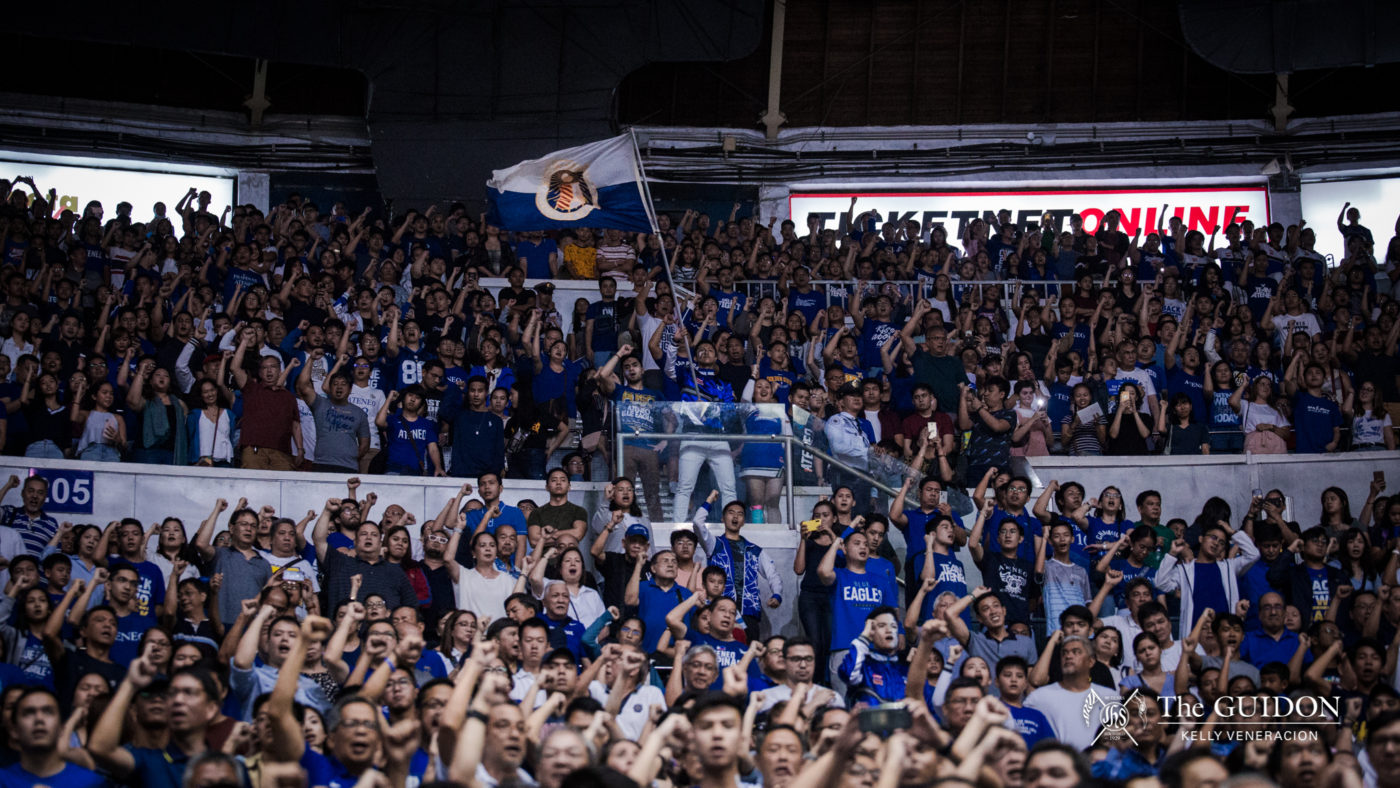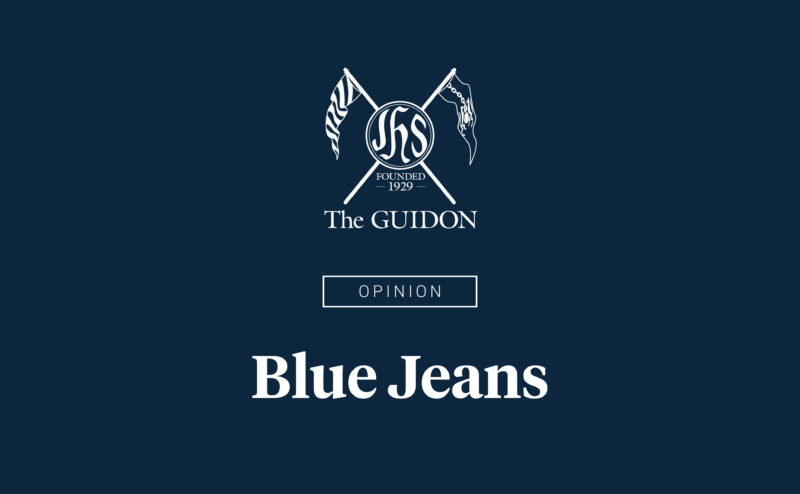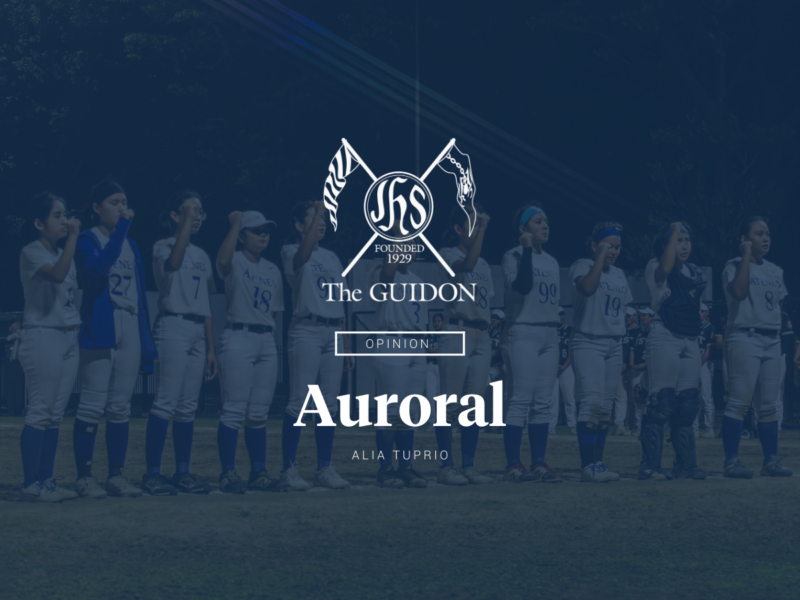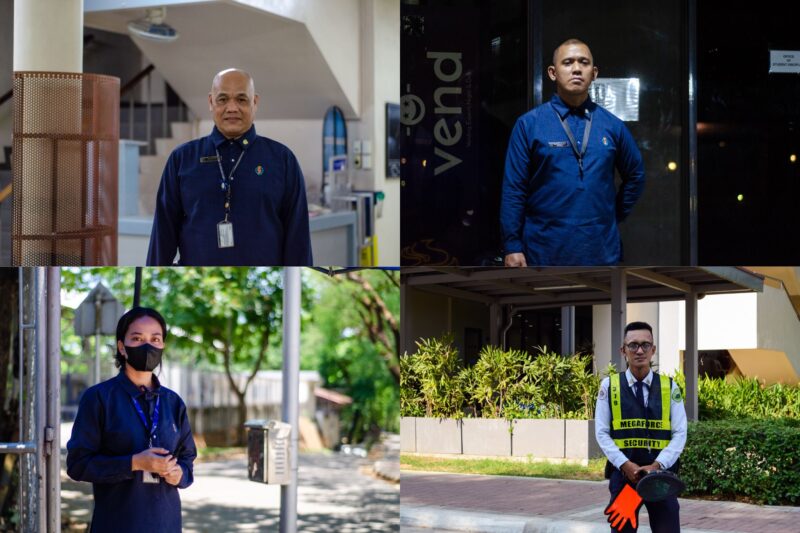SINCE ATENEO’S time in the National Collegiate Athletic Association (NCAA), the University’s cheering tradition has united countless generations of Ateneo supporters by fueling school spirit with its distinctly unintelligible chants. With the cheering tradition’s momentous past, the uniqueness of Ateneo’s cheers have been marked by the echoing drums and the cheerleaders’ routines.
However, due to the COVID-19 pandemic, athletic events have been put to a halt and has restricted the presence of cheering and school spirit in the new normal. While the pandemic has placed the tradition in a difficult place, the Ateneo school spirit endures.
Making history
Tracing its roots to 2,000 years ago, Ateneo’s cheers were derived from the exotic chants that echoed throughout Rome’s Via Appia in support of victorious warriors returning home. These Roman rallying calls inspired the unintelligible lyrics behind some of Ateneo’s express cheers.
The University’s express cheers consist of the five primary chants that were consecutively performed during halftime breaks in gamesーFabilioh, Halikinu, Rhumba Yell, Three Fights, and Blue Eagle Spelling. Aside from these, Roll out the Victory and Go Ateneo were also used to inspire and motivate the Blue and White’s sporting teams.
However, in contrast to Rome’s cheers that were chanted solely in celebration of victors, Ateneo’s brand of cheering catered to teams who have suffered defeat as well. “We use [cheers] both as a rallying cry kapag natatalo yung team (when the team is losing), but also as a cheer for when the team gets momentum,” said Blue Babble Battalion Co-Captain Migs Cruz.
When Ateneo took the leap from the NCAA to the University Athletic Association of the Philippines (UAAP) in 1978, the Blue and White’s cheering antics underwent major revisions to rectify the hooliganism that prevailed during Ateneo’s time in the NCAA. As such, heckling, taunting cheers, and halftime stunts that called out the name of opposing schools were restricted by the UAAP. Cheers like Give Them the Axe were also discontinued due to the UAAP’s reforms against violence.
From obscure Roman chants to Ateneo’s reformed way of cheering, the Blue and White has had a rich tradition in showing their support for their sports teams. However, the onslaught of the pandemic has prompted school spirit and cheering to take a back seat amid quarantine restrictions.
Finding spirit
Due to the cancellation of sporting events, school spirit and cheering have been directly affected as opportunities to learn the cheers were limited with the annual Cheer Rally getting called off. Likewise, the restrictions on all on-site activities narrowed the Blue Babble Battalion’s reach in the Ateneo community. “There are some days when we can’t do anything. We just have to wait for what the government tells us is safe to do. What the school tells us is safe to do,” Blue Babble Battalion Program Head Ralph Aligada lamented.
However, even prior to the pandemic, Ateneans’ unfamiliarity with the cheers has already been a challenge for the Blue and White’s cheerleaders. This unfamiliarity has been a collective effect of the various hurdles faced by the cheering tradition.
For one, the Blue Babble Battalion had to adjust to the University’s revised academic programs. From 2002 to 2006, Ateneo’s cheers were passed on through the Introduction to Ateneo Culture and Traditions (InTACT) and Physical Education (PE) classes. However, the aforementioned classes no longer include teaching the cheers in their syllabi, leaving students with the annual Cheer Rally and the actual sporting games as the only avenues to learn the cheers.
Moreover, the exact meanings of the cheers have been lost in history, reducing its collective meaning to the Ateneo community. The various reinterpretations by the inheriting generations and the routinary executions of the cheers have resulted in varying understandings of the chants throughout the years. “You know how because of decades of doing the same thing, you forget the real meaning. That happens,” Aligada explained.
Fallible yet enduring
While the cheers are often seen as gibberish, Blue Babble Battalion Program Co-Head Rafael Dimaano remained confident that the Blue and White’s cheers still hold valuable meaning in uniting the Ateneo community as a whole. “It has meaning. Wala lang (it just doesn’t have) exact meaning, but [the cheers have] a meaning for everyone,” he affirmed.
In order to strengthen Ateneo’s cheering tradition, proactive measures were set in place even before the pandemic. According to Aligada, there were plans to re-incorporate teaching the cheers in InTACT and PE, with the latter allotting one hour per semester in teaching the Ateneo cheers. “We are now trying to embed cheering tradition again to at least InTACT, kasi diba (because) it’s part of Ateneo culture,” Aligada added.
Moreover, the Blue Babble Battalion Program Heads held regular meetings with the University Athletics Office and the College Athletics Office to ideate on how the cheering tradition can be reinvigorated back into the Ateneo culture.
Despite the numerous hurdles that the cheering tradition and Blue Babble Battalion have faced, Ateneo’s school spirit still endures—especially in these unprecedented times. Beyond cheering and Ateneo sports, the University’s school spirit continues to manifest itself in Ateneans being men and women for others. This has been evident in Ateneo’s Disaster Response and Management Team (DReAM Team), who has been providing relief efforts to those affected by Typhoon Ulysses. “School spirit should not be limited to basketball alone [or] to sports alone. Especially now, it should be manifested in doing what is right,” Aligada said.
Meaningful gibberish
Despite the incomprehensible chants, Ateneo’s cheering tradition has undoubtedly bolstered school spirit and improved the morale of the Blue and White. The COVID-19 pandemic may have affected this tradition, but the true Atenean spirit manifests itself in ways more than just Ateneo’s athletic runs. “I think we will never be at risk of [a] total lack of school spirit,” Aligada assured. “Because as long as the school is there, the spirit will always be there,” he added.







